“Call them freaks, the underground, the counter-culture, flower children or hippies – they are all loose labels for the youth culture of the 60s …”
Barry Miles, author of Hippie
“This is how I remember my life. Other folks may not have the same memories, even though we might have shared some of the same experiences.”
So begins David Crosby’s autobiography, Long Time Gone (co-written by Carl Gottlieb). As it turns out, quite a few other folks seem to remember some people in Crosby’s life who are all but ignored in the lengthy book. The names are casually dropped only once, and not by Crosby but rather in a quote from manager Jim Dickson in which he describes the scene at the Sunset Strip clubs when The Byrds played: “We had them all. We had Jack Nicholson dancing, we had Peter Fonda dancing with Odetta, we had Vito and his Freakers.”
Following that brief mention by Dickson, Gottlieb briefly explains to readers that, “Vito and his Freakers were an acid-drenched extended family of brain-damaged cohabitants.” And that, in an incredibly self-indulgent 489-page tome, is the only mention you will find of “Vito and his Freakers” – despite the fact that, by just about all other accounts, the group dismissed as “brain-damaged cohabitants” played a key role in the early success of Crosby’s band. And the early success of Arthur Lee’s band. And the early success of Frank Zappa’s band. And the early success of Jim Morrison’s band. But especially in the early success of David Crosby’s band.
As Barry Miles noted in his biography of Frank Zappa, “The Byrds were closely associated with Vito and the Freaks: Vito Paulekas, his wife Zsou and Karl Franzoni, the leaders of a group of about 35 dancers whose antics enlivened the Byrds early gigs.” In Waiting for the Sun, Barney Hoskyns writes that the early success of The Byrds and other bands was due in no small part to “the roving troupe of self-styled ‘freaks’ led by ancient beatnik Vito Paulekas and his trusty, lusty sidekick Carl Franzoni.” Alban “Snoopy” Pfisterer, former drummer and keyboardist for the band Love, went further still, claiming that Vito actually “got the Byrds together, as I remember – they did a lot of rehearsing at his pad.”
And according to various other accounts, The Byrds did indeed utilize Vito’s ‘pad’ as a rehearsal studio, as did Arthur Lee’s band. More importantly, the Freaks drew the crowds into the clubs to see the fledgling bands perform. But as important as their contribution was to helping launch the careers of the Laurel Canyon bands, “Vito and his Freakers” were notable for something else as well; according to Barry Miles, writing in his book Hippie, “The first hippies in Hollywood, perhaps the first hippies anywhere, were Vito, his wife Zsou, Captain Fuck and their group of about thirty-five dancers. Calling themselves Freaks, they lived a semi-communal life and engaged in sex orgies and free-form dancing whenever they could.”
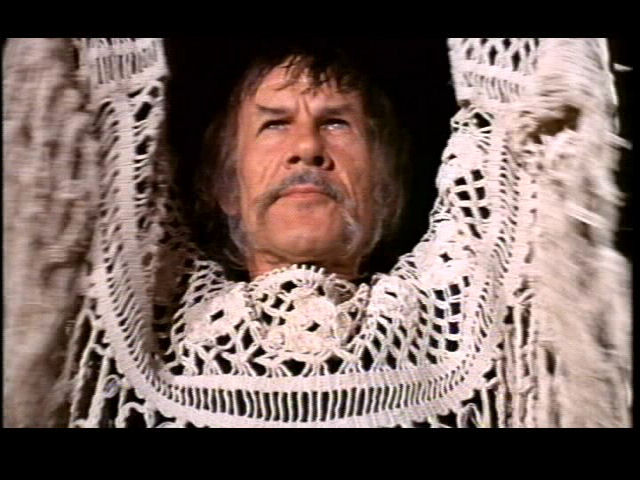
Some of those who were on the scene at the time agree with Miles’ assessment that Vito and his troupe were indeed the very first hippies. Arthur Lee, for example, boasted that they “started the whole hippie thing: Vito, Karl, Szou, Beatle Bob, Bryan and me.” One of David Crosby’s fellow Byrds, Chris Hillman, also credited the strange group with being at the forefront of the hippie movement: “Carl and all those guys were way ahead of everyone on hippiedom fashion.” Ray Manzarek of The Doors remembered them as well: “There were these guys named Carl and Vito who had a dance troupe of gypsy freaks. They were let in for free, because they were these quintessential hippies, which was great for tourists.”
If these folks really were the very first hippies, the first riders of that ‘counter-cultural’ wave, then we should probably try to get to know them. As it turns out, however, that is not such an easy thing to do. Most accounts – and there aren’t all that many – offer little more than a few first names, with no consensus agreement on how those first names are even spelled (“Karl” and “Carl” appear interchangeably, as do “Szou” and “Zsou,” and “Godot” and “Godo”). But for you, dear readers – because I apparently have way too much time on my hands – I have gone the extra mile and sifted through the detritus to dig up at least some of the sordid details.
By all accounts the troupe was led by one Vito Paulekas, whose full name is said to have been Vitautus Alphonsus Paulekas. Born the son of a Lithuanian sausage-maker circa 1912, Vito hailed from Lowell, Massachusetts. From a young age, he developed a habit of running afoul of the law. According to Miles, he spent a year-and-a-half in a reformatory as a teenager and “was busted several times after that.” In 1938, he was convicted of armed robbery and handed a 25-year sentence following a botched attempt at holding up a movie theater. By 1942, however, just four years later, he had been released into the custody, so to speak, of the US Merchant Marine (a branch of the US Navy during wartime), ostensibly to escort ships running lend-lease missions.
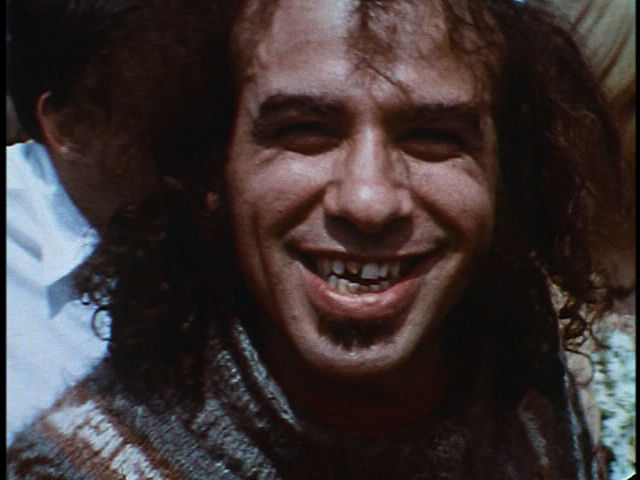
Following his release from the service, circa 1946, Vito arrived in Los Angeles. What he did for the next fifteen years or so is anyone’s guess; there is virtually no mention of those years in any of the accounts I have stumbled across. What is known is that by the early 1960s, Vito was ensconced in an unassuming building at the corner of Laurel Avenue and Beverly Boulevard, just below the mouth of Laurel Canyon (and very near Jay Sebring’s hair salon). At street level was his young wife Szou’s clothing boutique, which has been credited by some of those making the scene in those days with being the very first to introduce ‘hippie’ fashions. Upstairs was the living quarters for Vito, Szou and their young son, Godot. Downstairs was what was known as the “Vito Clay” studio, where, according to Miles and various others, Paulekas “made a living of sorts by giving clay modeling lessons to Beverly Hills matrons who found the atmosphere in his studio exciting.”
According to most accounts, it wasn’t really the Mayan-tomb decor of the studio that many of the matrons found so exciting, but rather Vito’s reportedly insatiable sexual appetite and John Holmesian physique. In any event, Vito’s students also apparently included such Hollywood luminaries as Jonathon Winters, Mickey Rooney and Steve Allen. Nevertheless, though Paulekas claimed to be a serious artist (a painter, poet, dancer and photographer, in addition to a sculptor), there is scant evidence that I have seen that supports such claims (I am not, however, the most objective of art critics, as I am, as best I can determine, apparently not cultured enough to ‘get’ the majority of what passes for art).
As for his erstwhile sidekick, Carl Orestes Franzoni, he has claimed in interviews that his “mother was a countess” and his father “was a stone carver from Rutland, Vermont. The family was brought from Italy, from the quarries in the northern part of Italy, to cut the stone for the monuments of the United States.” That would make his father, I’m guessing here, someone of some importance in the Mason community, if Carl is to be believed. By Franzoni’s own account, he grew up as something of a young hoodlum in Cincinnati, Ohio, and later went into business with some shady Sicilian characters selling mail-order breast and penis pumps out of an address on LA’s fabled Melrose Avenue. As Franzoni remembered it, his business “partner’s name was Scallacci, Joe Scallacci – the same name as the famous murderer Scallacci. Probably from the same family.” Probably so.

Franzoni, born circa 1934, hooked up with the older Paulekas sometime around 1963 and soon after became his constant sidekick. As previously mentioned, the group also included Vito’s wife Szou, an ex-cheerleader who had hooked up with Paulekas when she was just sixteen and he was already in his fifties. Also in the troupe was a young Rory Flynn (Errol Flynn’s statuesque daughter), a bizarre character named Ricky Applebaum who had half a moustache on one side of his face and half a beard on the other, most of the young girls who would later become part of Frank Zappa’s GTO project, and a lot of other oddball characters who donned ridiculous pseudonyms like Linda Bopp, Butchie, Beatle Bob, Emerald, and Karen Yum Yum.
Also flitting about the periphery of the dance troupe were a young Gail Sloatman (the future Mrs. Zappa, for those who have already forgotten) and a curious character on the LA music scene by the name of Kim Fowley. The two were, for a time, closely allied, and even cut a record together as “Bunny and the Bear” that Fowley produced (“America’s Sweethearts”). In 1966, Fowley produced a record for Vito as well, billed as “Vito and the Hands.” The 7” single, “Where It’s At,” which featured the musicianship of some of Frank Zappa’s Mothers of Invention, came no closer to entering the charts than did Fowley and Sloatman’s effort. Sloatman, by the way, soon found work as an assistant and booking agent for Elmer Valentine, who we will meet shortly.
Fowley, as with so many other characters in this story, has a rather interesting history. He was born in 1939, the son of actor Douglas Fowley, a WWII Navy veteran and attendee of St. Francis Xavier Military Academy. According to the younger Fowley’s account, he was initially abandoned to a foster home but later taken back and raised by his father. He grew up in upscale Malibu, California, where he shared his childhood home with “a bunch of actors and guys from the Navy.” At the age of six-and-a-half, Fowley had an unusual experience that he later shared with author Michael Walker: dressed up in a sailor suit by his dad and his Navy buddies, he was taken “to a photographer named William, who took a picture of me in the sailor suit. His studio was next door to the Canyon [Country] Store.” Right after that, he was driven down Laurel Canyon Boulevard to the near-mythical Schwabs Drugstore, where “everybody cheered and two chorus girls grabbed my six-year-old cock and balls and stuck a candy cigarette in my mouth.”
Nice story, Mr. Fowley. Thanks for sharing.
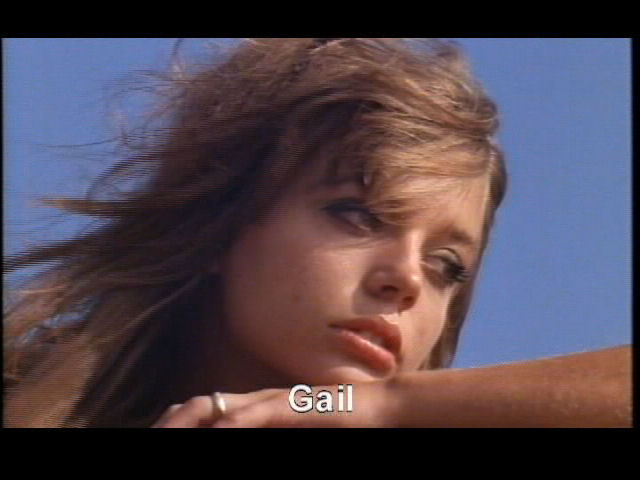
It’s probably safe to assume that childhood experiences such as that helped to prepare Fowley for his later employment as a young male street hustler, a profession that he practiced on the seedy streets of the city of angels (by Fowley’s own account, I should probably add here, just as it was James Dean himself who claimed to have worked those same streets with Nick Adams). Following that, Fowley spent some time serving with the Army National Guard, after which he devoted his life to working in the LA music industry as a musician, writer and producer – as well as, according to some accounts, a master manipulator.
Around 1957, Fowley played in a band known as the Sleepwalkers, alongside future Beach Boy Bruce Johnston. At times, a diminutive young guitarist named Phil Spector – who had moved out to LA with his mother not too many years earlier, following the suicide of his father when Phil was just nine – sat in with the group. During the 1960s, Fowley was best known for producing such ridiculous yet beloved novelty songs as the Hollywood Argyles’ “Alley Oop” and the Rivington’s “Papa Oom-Mow-Mow,” though he also did more respectable work, such as collaborating on some Byrds’ tracks and having some of his original songs covered by both the Beach Boys and the Flying Burrito Brothers.
In 1975, Fowley had perhaps his greatest success when he created the Runaways, further lowering the bar that Frank Zappa had already set rather low some years earlier when he had created and recorded the GTOs. The Runaways featured underage versions of Joan Jett and Lita Ford, whom Fowley tastefully attired in leather and lingerie. As he would later boast, “Everyone loved the idea of 16-year-old girls playing guitars and singing about fucking.” Especially, I would imagine, their mothers and fathers. Some of the young girls in the band, including Cherie Curry, would later accuse Fowley of requiring them to perform sexual services for he and his associates as a prerequisite for membership in the group.
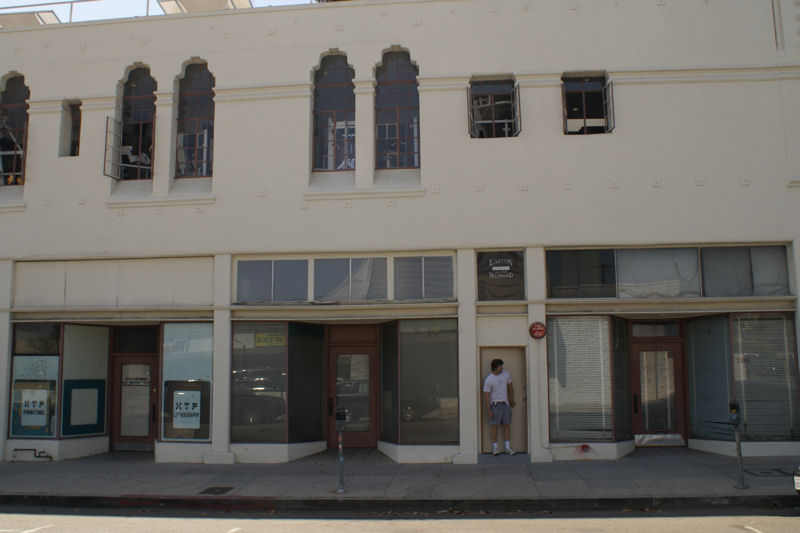
Prior to assembling the Runaways, one of Fowley’s proudest accomplishments had been producing the 1969 album “I’m Back and I’m Proud” by rockabilly pioneer Gene Vincent, featuring backing vocals by Canyonite Linda Ronstadt. Just two years later, Vincent – a Navy veteran raised in that penultimate Navy town, Norfolk, Virginia – permanently checked out of the Hotel California on October 12, 1971 (there’s that date again), due reportedly to a ruptured stomach ulcer. Not long before his death, Vincent had been on tour in the UK, but he had hastily returned to the US due to pressure from, among others, promoter Don Arden. Known none-too-affectionately as the “Al Capone of Pop,” Arden had a penchant for guns and violence and he was known to openly boast of his affiliation with powerful organized crime figures. In addition to being a business partner of the equally nefarious Michael Jeffery, Arden was also the father of Sharon Osbourne and the former manager of her husband’s band, Black Sabbath … but here I have surely digressed, so let’s try to bring this back around to where we left off.
One other accomplishment of Fowley’s bears mentioning here: he received a guest vocalist credit on the Mothers of Invention album “Freak Out,” as did both Vito Paulekas and his sidekick, Carl Franzoni, to whom the song “Hungry Freaks, Daddy” was dedicated (some sources claim that Bobby Beausoleil also provided guest vocals on Zappa’s debut album, though his name does not appear in the album’s credits).
By at least as early as 1962, not long before Carl Franzoni joined the group, the Freak troupe was already hitting the clubs a couple nights each week to refine their unique style of dance (perhaps best described as an epileptic seizure set to music) and show off their distinctively unappealing, though soon to be quite popular, fashion sense. In those early days, they danced to local black R&B bands and to a band out of Fresno known as the Gauchos, in dives far removed from the fabled Sunset Strip – because, Franzoni has said, “There were no white bands [in LA] yet,” and “There were no clubs on Sunset Boulevard.”

That, of course, was all about to quickly change. As if by magic, new clubs began to spring up along the legendary Sunset Strip beginning around 1964, and old clubs considered to be long past their prime miraculously reemerged. In January 1964, a young Chicago vice cop named Elmer Valentine opened the doors to the now world-famous Whisky-A-Go-Go nightclub. Just over a year later, in spring of 1965, he opened a second soon-to-be-wildly-popular club, The Trip. Not long before that, near the end of 1964, the legendary Ciro’s nightclub began undergoing extensive renovations. Opened in 1940 by Billy Wilkerson, an associate of Bugsy Siegel, the upscale club had flourished for the first twenty years of its existence, with a clientele that regularly included Hollywood royalty and organized crime figures. By the early 1960s though the Strip was dead, and the once prestigious club had gone to seed.
Ciro’s reopened in early 1965, just before The Trip opened its doors and just in time, as it turns out, to host the very first club appearance by the musical act that was about to become the first Laurel Canyon band to commit a song to vinyl: The Byrds. By 1967, Gazzaris had opened up on the Strip as well, and in the early 1970s Valentine would open yet another club that endures to this day, The Roxy. Smaller clubs like the London Fog, where The Doors got their first booking as the house band in early 1966, opened their doors to the public in the mid 1960s as well.
The timing of the opening of Valentine’s first two clubs, and the reopening of Ciro’s, could not have been any more fortuitous. The paint was barely dry on the walls of the new clubs when bands like Love and The Doors and The Byrds and Buffalo Springfield and the Turtles and the Mothers and the Lovin’ Spoonful came knocking. The problem, however, was that the new clubs were not yet well known, Ciro’s had been long left for dead, and nobody had the slightest idea who any of these newfangled bands were. What was needed then was a way to create a buzz around the clubs that would draw people in and kick-start the Strip back to life, as well as, of course, launch the careers of the new bands.
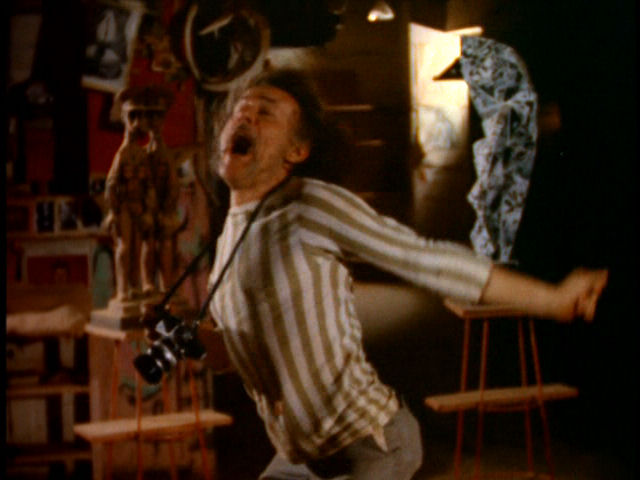
The bands themselves could not be expected to fill the new clubs, since, besides being unknown, they also – and yeah, I know that you don’t really want to hear this and I will undoubtedly be deluged with letters of complaint, but I’m going to say it anyway – weren’t very good, at least not in their live incarnations. To be sure, they sounded great on vinyl, but that was largely due to the fact that the band members themselves didn’t actually play on their records (at least not in the early days), and the rich vocal harmonies that were a trademark of the ‘Laurel Canyon sound’ were created in the studio with a good deal of multi-tracking and overdubs. On stage, it was another matter entirely.
Enter then the wildly flamboyant and colorful Freak squad, who were one key component of the strategy that was devised to lure patrons into the clubs (the other component of the strategy, hinted at in one of the quotes near the top of this post, will be covered in installment #7). Vito and Carl’s dancers were a fixture on the Sunset Strip scene from the very moment that the new clubs opened their doors to the public, and they were, by all accounts, treated like royalty by the club owners. As John Hartmann, proprietor of the Kaleidoscope Club, acknowledged, he “would let Vito and his dancers into the Kaleidoscope free every week because they attracted people. They were really hippies, and so we had to have them. They got in free pretty much everywhere they went. They blessed your joint. They validated you. If they’re the essence of hippiedom and you’re trying to be a hippie nightclub, you need hippies.”
As the aforementioned Kim Fowley put it, with characteristic bluntness, “A band didn’t have to be good, as long as the dancers were there.” Indeed, the band was largely irrelevant, other than to provide some semblance of a soundtrack for the real show, which was taking place on the dance floor. Gail Zappa candidly admitted that, even at her husband’s shows, the real attraction was not on the stage: “The customers came to see the freaks dance. Nobody ever talks about that, but that was the case.” Frank added that, “As soon as they arrived they would make things happen, because they were dancing in a way nobody had seen before, screaming and yelling out on the floor and doing all kinds of weird things. They were dressed in a way that nobody could believe, and they gave life to everything that was going on.”
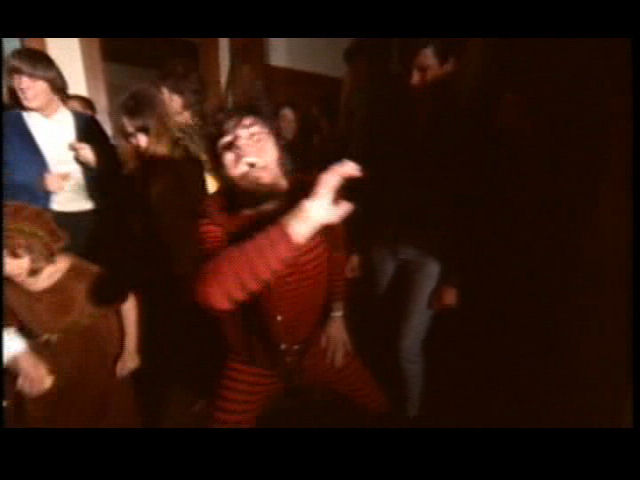
For reasons that clearly had more to do with boosting attendance at the clubs than with any actual talents displayed by the group, Vito and Carl seem to have become minor media darlings over the course of the 1960s and into the 1970s. The two can be seen, separately and together, in a string of cheap exploitation films, including Mondo Bizarro from 1966, Something’s Happening (aka The Hippie Revolt) from 1967, the notorious Mondo Hollywood, also released in 1967, and You Are What You Eat, with David Crosby, Frank Zappa and Tiny Tim, which hit theaters in 1968. In 1972, Vito made his acting debut in a non-documentary film, The White Horse Gang.
Paulekas reportedly also popped up on Groucho Marx’s You Bet Your Life, and Franzoni made an appearance on a 1968 Dick Clark TV special. The golden child, Godot Paulekas, was featured in a photo in Life magazine circa 1966, and the whole troupe showed up for an appearance on the Tonight Show. According to Barry Miles, Vito also “appeared regularly on the Joe Pyne Show and in between the bare-breasted girls in the late fifties and early sixties men’s magazines.”
Joe Pyne, for those of you too young to remember (myself included), is the guy that we have to thank for paving the way for the likes of Bill O’Reilly, Rush Limbaugh, Sean Hannity, Michael Savage, Don Imus, Morton Downey, Jr., Jerry Springer and Wally George. For Mr. Pyne, you see, was the guy who pioneered the confrontational interview style favored by so many gasbags today. The decorated Marine Corps veteran debuted as a talk-radio host in 1950 and quickly became known for insulting and demeaning anyone who dared to disagree with him, guests and listeners alike. In 1957, he moved his show to LA, and by 1965, he was nationally syndicated both on the radio and on television. His favored targets, as you may have guessed, included hippies, feminists, gays, and anti-war activists, and his interviews frequently ended with his guest either walking off or being thrown off the stage. Nearing the peak of his popularity, Pyne died on March 23, 1970 at the age of forty-five, reportedly of lung cancer. His ideological offspring, however, live on.
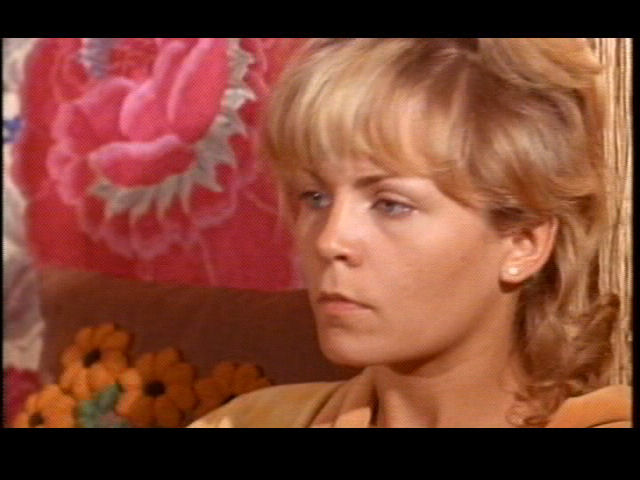
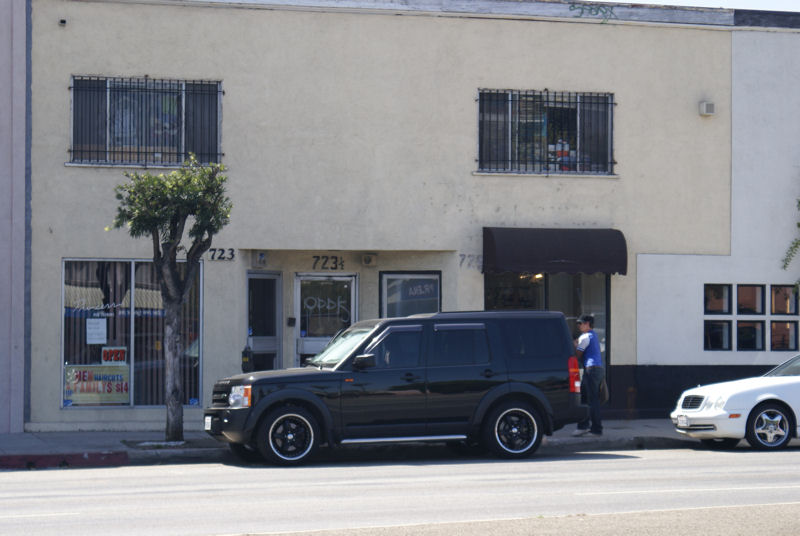
To Be Continued …

Amazing origin history of the LA hippies! Most people have never heard of Vito Paulekas and his “freaks”. They sound like the original ‘Merry Pranksters’.
Smells of MK ULTRA.
I remember listening to Zappa’s records and thinking I was so cool and taking part in some kind of forbidden fruit. It’s more mind-blowing to learn that he was part of a government program to shape the culture and control the opposition, than it would be to take any of the so-called mind expanding drugs.
Not mentioned but significant, is that Vito’s wife’s name “Zshou” is the name of a demon, ostensibly one of Satan’s lieutenants, written in a slightly abbreviated form.
Demonic and also used as a Zeppelin album title, yes?
I can say of the Freaks, I know that both Linda Bopp and Butchie (Jean Webber, Bob Denver’s second wife) were real people. And both seemed like normal women of their time and place. Butchie was a best friend of my mom and Linda lived with us twice, in the ’60’s and ’70’s.
I have a friend who’s dad was in the USAF at West Ruislip AFB and she has told me stories of situations that reek of MK Ultra. Snippets of memories. So sad.